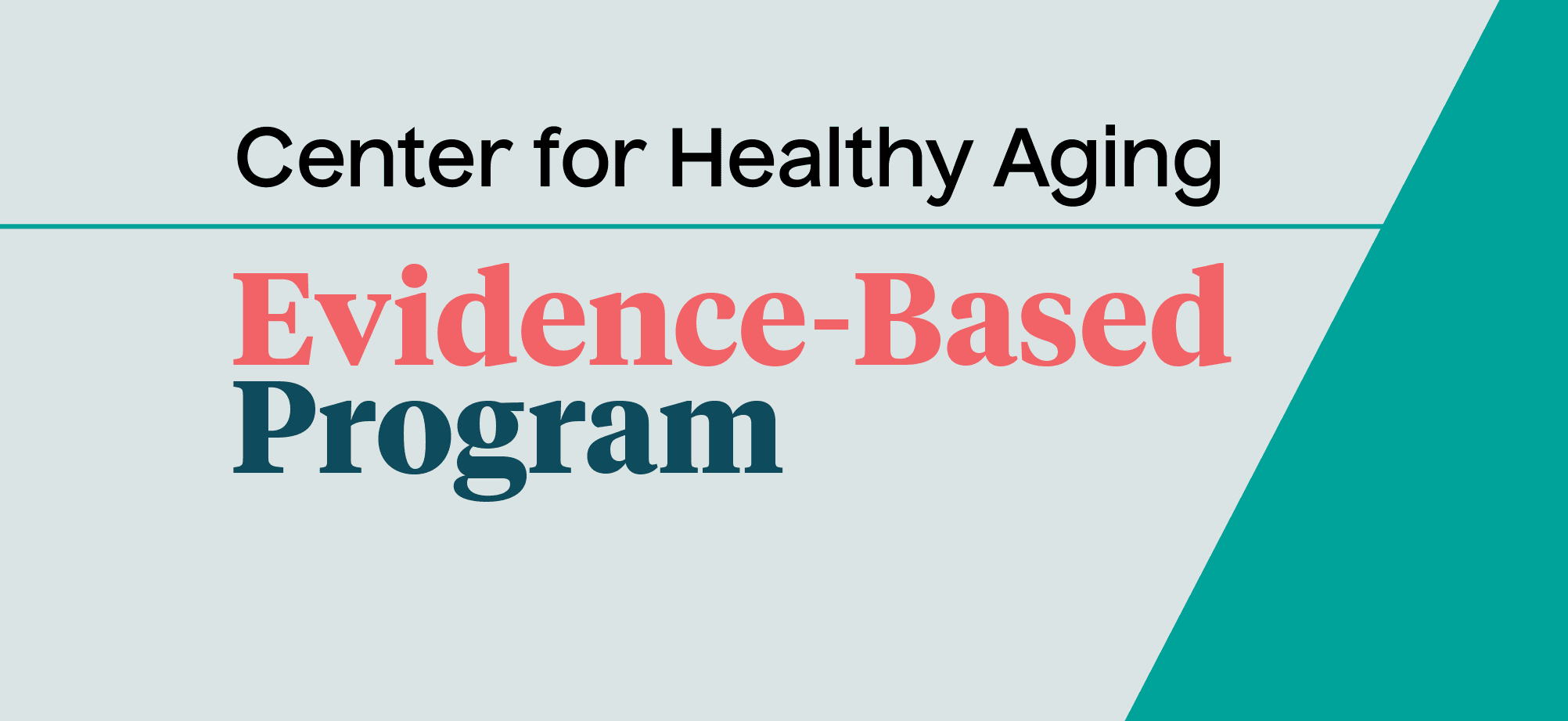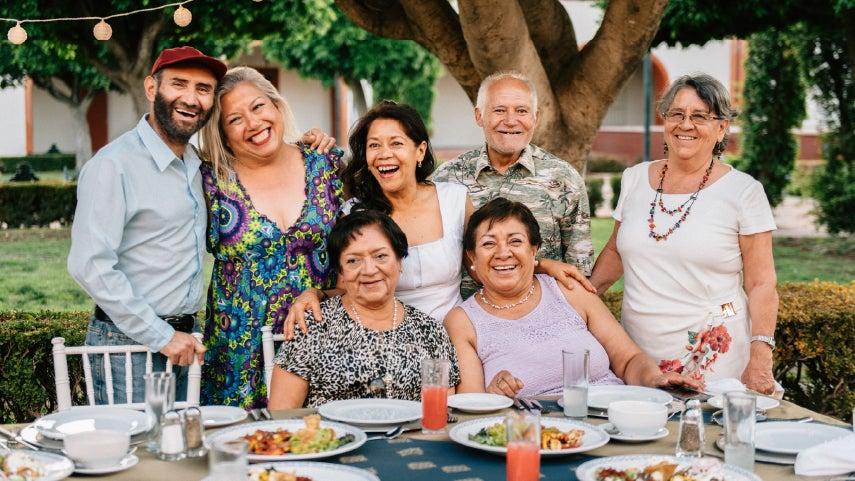
Caregivers are everyday partners in the lives of so many older adults, playing a critical role in their health, independence, and overall well-being. From managing medications, to handling care transitions, to supporting daily activities, caregivers have a lot on their plate. Whether they’re family members, friends, or paid professionals, they often face challenges that can take a toll on their own health.
Yet evidence-based health promotion programs are making a real difference, providing much-needed support, skills, and community connections that can ease the caregiving journey.
The impact of evidence-based programs
Programs focusing on chronic disease self-management, falls prevention, physical activity, behavioral health, and nutrition are specifically designed to address the unique health and social needs of caregivers and their care recipients. The benefits are compelling:
- According to the National Alliance for Caregiving, nearly one in five caregivers report their health as fair or poor, and they are more likely to be managing their own ongoing health conditions compared to non-caregivers.1
- Caregivers dedicate an average of 24 hours per week to caregiving, with 23% providing over 40 hours weekly. Almost half report feeling emotionally stressed, and about a quarter face financial strain or physical problems related to their caregiving duties.1
Given these challenges, evidence-based programs offer caregivers vital tools to improve their own health while better supporting those in their care. For example, the Chronic Disease Self-Management Program (CDSMP) has been shown to improve participants' self-reported health, reduce days of depression, and enhance overall quality of life. It even leads to tangible outcomes like fewer emergency room visits, saving an average of $364 per person.2
Falls prevention is another critical area where EBPs shine. Programs like "A Matter of Balance" help reduce fear of falling, encourage regular exercise, and save Medicare an average of $938 per participant in unplanned medical expenses. Meanwhile, "Stepping On" has shown a 30% reduction in the rate of falls among participants, yielding a 64% return on investment with a net savings of $134 per participant. These programs not only improve safety but also foster confidence and independence among older adults and their caregivers.3
Growing caregiver participation in community programs
Since 2010, community-based organizations across the U.S. have received funding from the Administration for Community Living (ACL) to offer a wide range of evidence-based health promotion programs. From 2019 to 2024, over 14,000 caregivers participated in 32 types of chronic disease self-management education (CDSME) programs, making up 26% of all participants with an average age of 64. Programs like "Building Better Caregivers" and "Powerful Tools for Caregivers" have seen particularly high participation rates, underscoring caregivers’ growing interest in these valuable resources.
Interestingly, caregivers are slightly more likely to complete health education programs than general participants, and those who attend workshops with other caregivers or someone they know tend to have higher completion rates.4,5 Men, caregivers, and individuals ages 65-84 were more often accompanied by a family member and more likely to attend a program in familiar locations like libraries and senior centers.5 This suggests that the support and understanding they find in these settings can be a powerful motivator.
7 strategies to engage caregivers in evidence-based programs
By addressing the specific needs of caregivers and providing practical support, organizations can ensure caregivers remain active and committed participants in EBPs. Here are seven key strategies to make these programs more accessible and impactful for caregivers:
1. Communicate the benefits clearly
Caregivers are juggling multiple responsibilities, so it’s crucial to make the benefits of EBPs crystal clear. Highlighting how these programs can reduce stress, improve caregiving skills, and lead to better health outcomes for both caregivers and their care recipients can be a powerful draw. For example,
- Practical tools for stress management and problem-solving, helping caregivers feel more confident and capable in their roles
- Training on communication strategies between family members, friends, and care providers
- Demonstrated exercises that caregivers can do alongside their care recipients, for mutual benefit
Offering "Session Zero,” an optional introductory session held before workshops, is a great strategy to share an overview of the program, outline the expectations for participant involvement, and encourage participants to commit to completing the program.
Sharing success stories and testimonials can also make the benefits feel more tangible. One CDSMP participant shared:
I was able to resolve an issue in real time with my spouse taking his medication daily and on time. The simple solution suggested by the group alleviated stressful situations that came up daily."
This kind of real-world impact resonates deeply with caregivers.
2. Provide practical resources and strategies
Even if a specific program doesn’t have built-in caregiver components, facilitators can provide additional resources tailored to caregivers’ needs. Offering handouts or digital guides with tips on effective caregiving, managing finances, or maintaining health can be incredibly helpful. For instance, the following tools offer practical advice that caregivers can easily integrate into their daily routines:
3. Offer flexible participation options
Flexibility is key to engaging busy caregivers. Virtual options, like video conferencing or phone participation, allow caregivers to join sessions from the comfort of their homes, saving travel time and making it easier to fit into their schedules. Offering sessions in the evenings or on weekends can also accommodate diverse responsibilities, ensuring caregivers can participate without conflict.
Community-based programs that encourage caregivers to attend with their care recipients can also be effective, fostering shared experiences and mutual support. Some organizations coordinate EBPs with respite care or adult day centers, allowing caregivers to participate while their loved ones receive support.
4. Foster emotional support and connection
Access to mental health resources can help caregivers cope with the emotional demands of their role, whether through formal referrals or by sharing information on local support groups. Leveraging social media platforms to create these groups can offer caregivers a convenient and accessible way to connect with others who understand their challenges. Many EBPs facilitate peer connections by encouraging participants to check in with a “buddy” in between sessions to build a sense of community and reduce feelings of isolation.
There are several evidence-based programs that specifically address mental and behavioral health including PEARLS, Healthy IDEAS, the Wellness Recovery Action Plan, and SBIRT (Screening, Brief Intervention, and Referral to Treatment).
5. Promote caregiver wellness
Caregivers need to prioritize their own physical health to provide the best care for others. Facilitators can offer connections to exercise classes or share wellness tips that caregivers can practice alongside their care recipients. Resources like "Get Fit for Life: Exercise & Physical Activity for Healthy Aging" provide valuable guidance on maintaining physical health, and caregivers can access these tips online or in print for easy reference.
6. Partner with community-based and health care providers
Form partnerships with both community-based and clinical service providers to encourage a “no wrong door” style approach to connecting caregivers with a spectrum of supportive services, including evidence-based programs. While medical providers may have limited capacity to address caregiver’s needs in medical appointments, referrals to community-based services can provide more holistic support. Collaborating with health care providers to offer workshops that address both medical and caregiving aspects provides comprehensive support and ensures caregivers are aware of the available resources and the potential benefits for their caregiving roles
7. Regular check-ins and feedback
Regular check-ins, whether through phone calls, emails, or virtual meetings, help caregivers feel valued and supported. These touchpoints provide an opportunity to gather feedback, address concerns, and make caregivers feel heard, ultimately enhancing their engagement and commitment to the program.
Engaging caregivers in evidence-based programs is not just about providing education—it’s about creating a supportive, flexible, and inclusive environment that addresses their unique needs and challenges. By clearly communicating the benefits, offering practical support, and fostering a sense of community, these programs can make a profound difference in the lives of caregivers and their care recipients.
This article was supported by the Administration for Community Living (ACL), U.S. Department of Health and Human Services (HHS) as part of a financial assistance award totaling $10,000,000 with 100% funding by ACL/HHS. The contents are those of the author(s) and do not necessarily represent the official views of, nor an endorsement, by ACL/HHS, or the U.S. government.
Sources
1. National Alliance for Caregiving and AARP. Caregiving in the U.S. 2020. Found on the internet at https://www.caregiving.org/research/caregiving-in-the-us/
2. National Council on Aging. National Study of the Chronic Disease Self-Management Program: A Brief Overview. Found on the internet at https://www.ncoa.org/article/national-study-of-the-chronic-disease-self-management-program-a-brief-overview
3. National Council on Aging. Falls Prevention Programs: Saving Lives, Saving Money Infographic. Found on the internet at https://www.ncoa.org/article/falls-prevention-programs-saving-lives-saving-money-infographic
4. Smith M, Washington T, Mingo C, et al. Caregiver Participation in Chronic Disease Self-Management Education Programs: Findings from a National Study. Innovation in Aging. November 2018. Found on the internet at https://academic.oup.com/innovateage/article/2/suppl_1/289/5170573
5. Shi J, Ferretti, L, McCallion P, et al. Attending with family members, completion rate and benefits accrued from chronic disease self-management program. Chronic Illness. December 2022. Found on the internet at https://journals.sagepub.com/doi/abs/10.1177/17423953211032263



